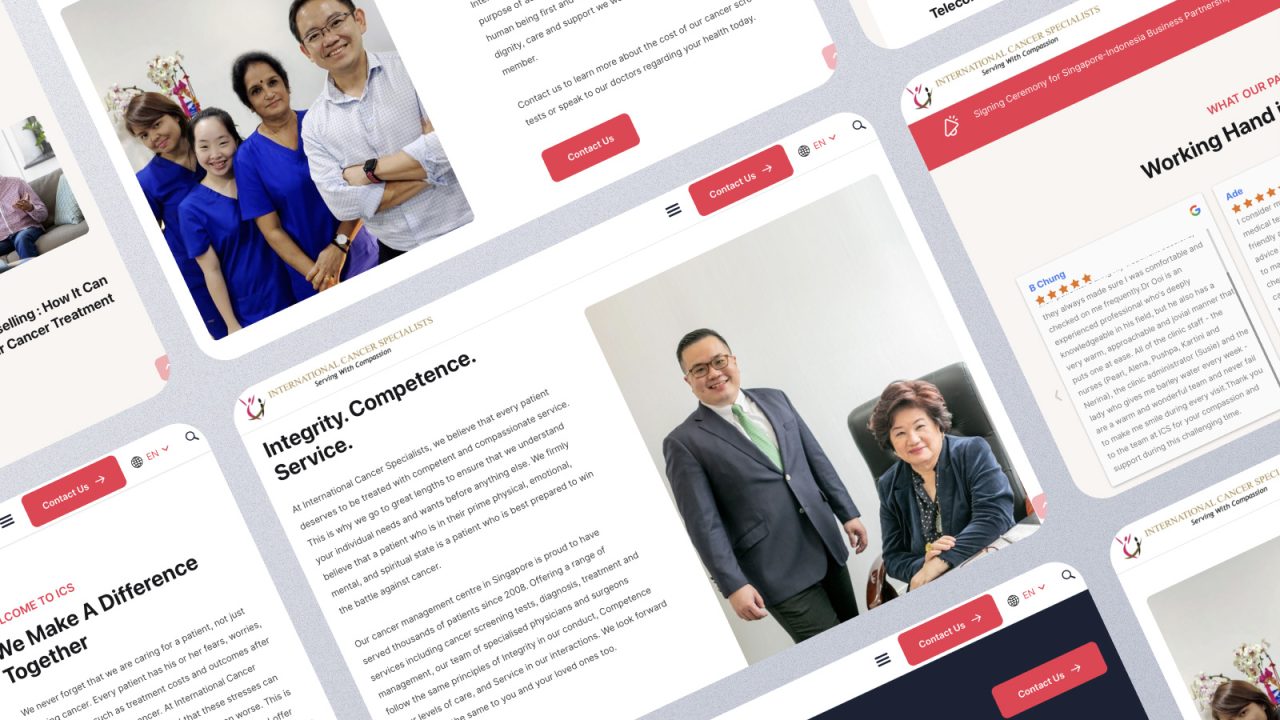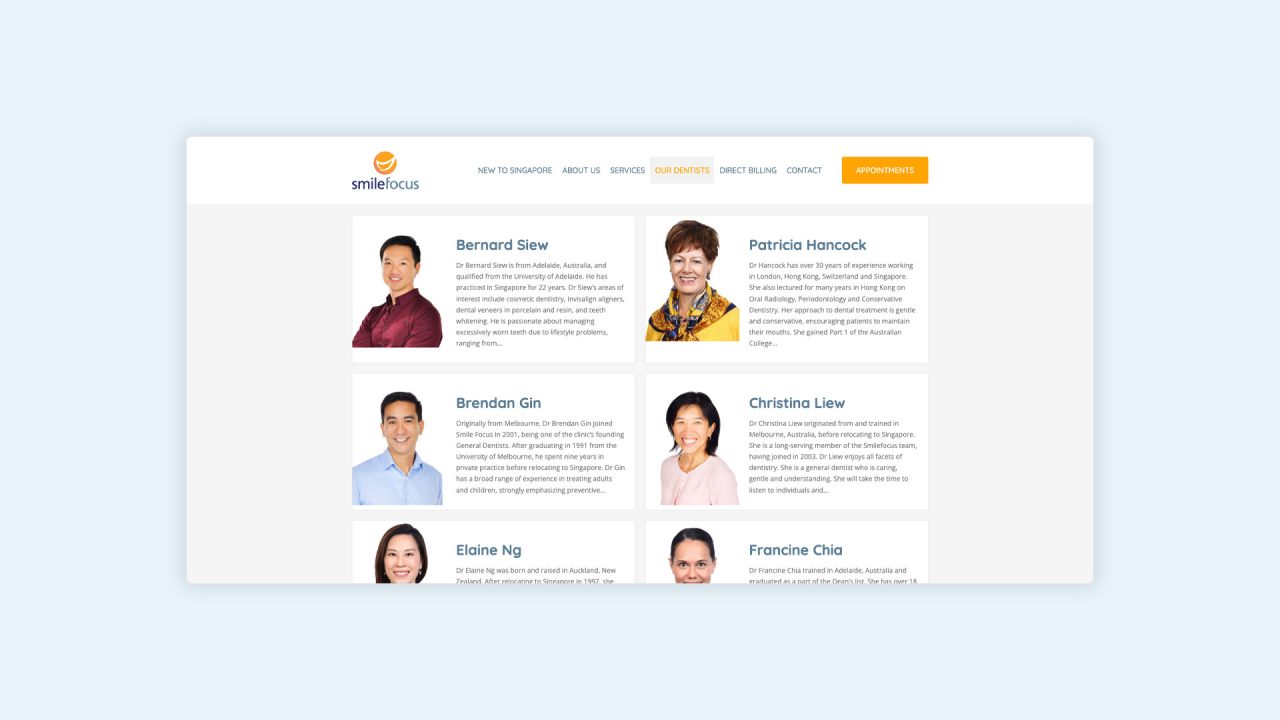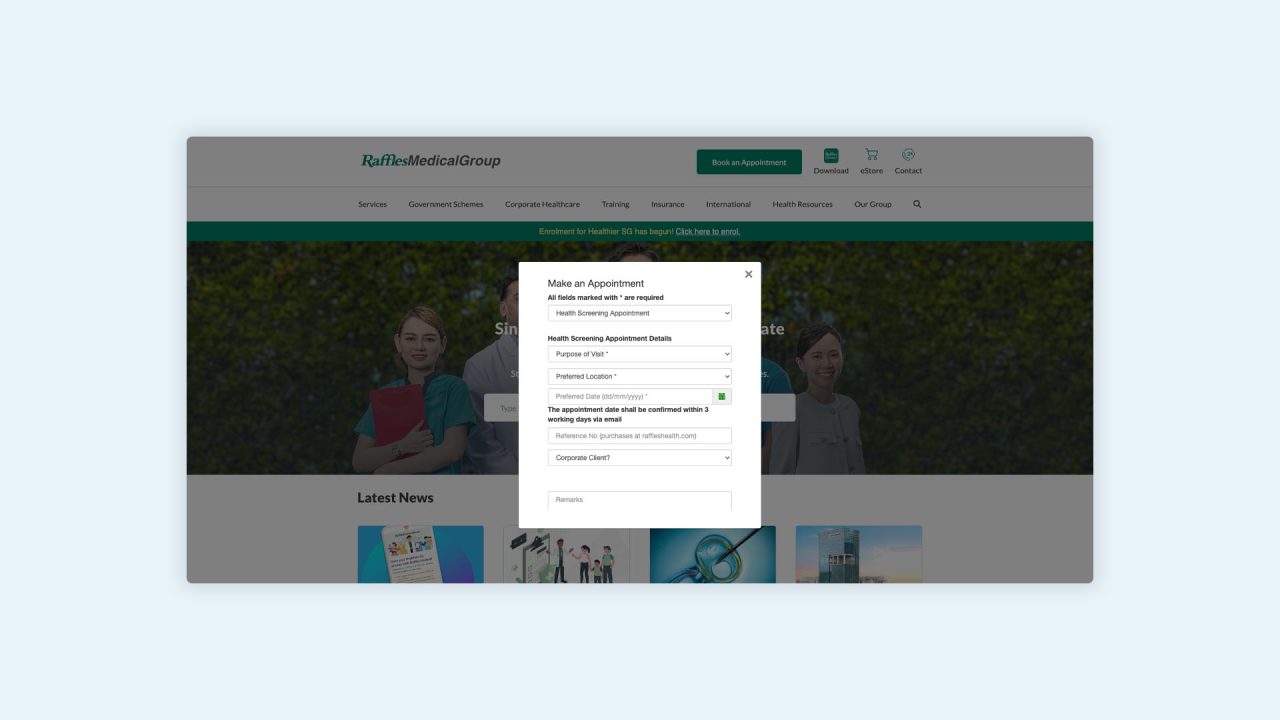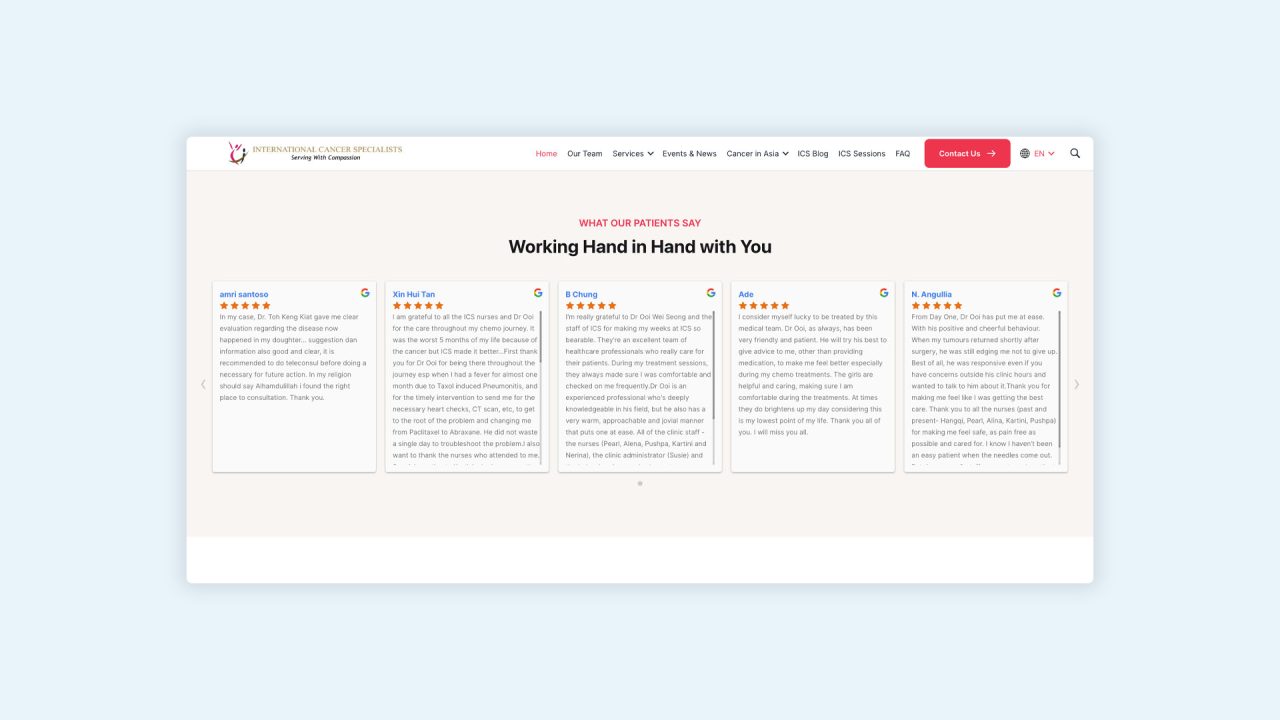
Healthcare access has had a big shake-up recently – maybe an off-the-Richter Scale earthquake is a more accurate way to describe the complete chaos the general public has faced when accessing health services since 2020. Healthcare service providers have had to step up and find new ways to meet unprecedented demand and exceed customer expectations.
In the modern world, that means online service access, information and even service delivery through websites and apps. While the change may have come slowly, it’s well worth it.
A healthcare website serves as the first point of contact for patients seeking medical care. That makes it crucial for healthcare providers to nail an online presence that caters to the needs of their patients.
The right healthcare website can attract clients and help providers build a strong reputation in a shaken industry.
Like any advice, I give about building and maintaining a successful business website, understanding your market is the first step towards a website structure, visual appeal and content that will resonate with your patients.
Get personal and avoid the cheesy stock photos. Personalised clinic and staff photos help to build trust and credibility, while a simple online appointment booking functionality makes it easier for patients to book appointments.
Moreover, when they arrive at your clinic, they will recognise it because of the familiarity you built with them online. Trust is everything when it comes to unguarded communication and even extends to patients following your advice and taking action on your recommendations.
Engaging with patients and working with healthcare providers can help build a strong industry reputation. Implementing healthcare marketing strategies and creating health-specific content can also help to attract the right clients to your website.
This blog will take you through how to attract the right customers using nine proven techniques that we at Chillybin have helped our clients in the healthcare sector implement. Using these techniques to build and expand your healthcare website is easy when you know how. We’ll walk you through the details you need to follow through and see results.
Key Takeaways
- Understanding your market is crucial for creating a website that caters to the needs of your patients.
- Personalised clinic and staff photos, simple online appointment booking functionality and engaging with patients are essential elements of a successful healthcare website.
- Working with healthcare providers, implementing healthcare marketing strategies and creating health-specific content can help to attract the right clients to your website.
Table of Contents

Understanding Your Market
Understanding your market to attract the right clients to your healthcare website is important. This includes knowing your:
- Competition
- Target audience
- Potential patients
Knowing your competition
Knowing your competition can help you differentiate your website and services from others. A great way to get your head around this is by conducting a competitive analysis designed to help you identify their strengths and weaknesses and help you position your website accordingly. There are also some real-time data tools, such as Ahrefs, that you can use to check how well a competitor’s website performs, including which pages get the most traffic.
Identifying your target audience
Identifying your target audience is crucial to creating a website that resonates with potential patients. This includes understanding their demographics, needs and preferences. By tailoring your website to meet what they are looking for, you show that you are helpful, trustworthy and well-placed to help in person. Identifying their needs gives you a real advantage in attracting clients and increasing engagement.
Understanding your potential patients
Understanding your potential patients is also essential. This includes knowing their health concerns, questions and goals. Addressing their needs and providing valuable information can establish trust and credibility, leading to more conversions. There may be problems your potential patients are facing that you can’t help with. When these arise in your discussions, cover them by giving information, contacts, and alliances with healthcare specialists who can help with these extra areas.

Personalised Clinic and Staff Photos
One of the best ways to attract clients to your healthcare website is by showcasing your clinic and staff through personalised photos. This can help build trust and credibility with potential clients, as they can see the faces behind your services.
Real photos beat stock images – hands down – it’s instantly more authentic and credible, but… there is a but. While you might not have professional lighting and expensive lenses, you must still prepare your space. Ensure the rooms you take pictures in are clean, organised and visually appealing. You might find a better aesthetic by accessing natural lighting and invitingly arranging furniture. These details can significantly affect how potential clients perceive your clinic.
In addition to clinic photos, staff photos can also be beneficial. By including photos of your healthcare team, you can help potential clients feel more comfortable and familiar with you.
This can be especially important for anyone feeling nervous about seeking healthcare services or visiting the clinic but can’t remember their doctor’s name. Having a face to go along with the name is reassuring.
Include a mix of headshots and candid shots. This can help showcase the personality and character of your team members. You can also consider including brief bios or descriptions of each staff member to help potential clients get to know them better.
Personalised clinic and staff photos can be a powerful tool for attracting the right clients to your healthcare website. By positively and invitingly showcasing your space and your team, you can help build trust and credibility with those seeking healthcare services.

Add Simple Online Appointment Booking Functionality
One of the best ways to attract clients to your healthcare website is to add simple online appointment booking functionality. This allows patients to book medical care online quickly, without having to pick up the phone or email back and forth.
This can also be a real saver for your clinic staff, who might not have time to answer calls. Patients can see their options and book a time that suits their schedule.
With online appointment booking, patients can land on the booking page, select the appointment time that suits them and receive an email confirmation and a reminder for their appointment. Who isn’t going to like a process designed to be quick and convenient, saving patients time and hassle?
Online booking also benefits healthcare providers by reducing time spent on administrative tasks, such as scheduling appointments and answering phone calls. This allows healthcare providers to focus on providing quality care to their patients.
Adding online appointment booking functionality to your healthcare website is easy and can be done using various tools and software. Many healthcare providers use third-party appointment booking software, which can be integrated into any website.
Adding simple online appointment booking functionality effectively improves the patient experience and reduces administrative tasks for healthcare providers.
Engaging With Patients
Engagement is the most compelling aspect of creating customer satisfaction and having them stay with you. It involves building a relationship with patients and providing them with any and all information and support they need to make informed decisions about their health.
Offering online services such as telemedicine and online consultations can be convenient for clients who cannot visit in person. This can also attract clients who prefer the convenience of online services.
Healthcare providers can attract clients and build a loyal customer base by engaging with patients. Here are some tips on how to engage with patients effectively:
Follow-up:
Following up with patients after their visit is a great way to show that you care about their health and well-being. This can be done through phone calls, emails, or text messages. Following up can also help address patients’ concerns or questions after their visit.
Personalised Care:
Personalised care involves tailoring the care and treatment to each patient’s specific needs, which is an effective way to engage with patients. This can be done by taking the time to understand the patient’s medical history, lifestyle and preferences.
Appointment Reminders:
Sending appointment reminders helps ensure patients attend their appointments, which is a best-case scenario for everyone. How you do this will depend on your patient preferences but options are easy to manage through automated text messages, emails or even apps. Appointment reminders can also help to reduce the number of missed appointments and improve patient satisfaction.
Patient Testimonials:
Sharing patient testimonials on your healthcare website can help build trust and credibility with potential clients. Patient testimonials can provide valuable insights into patients’ quality of care and treatment.
Patient Referrals:
Encouraging patients to refer their friends and family to the healthcare provider effectively attracts new clients. This can be done through referral programs or by simply asking patients to spread the word about the quality of care they received.
As a leading digital marketing agency, we’re ready to develop the strategies you need to scale your business.
We’ll give you no-nonsense marketing and SEO strategies that will bring you high-quality leads.

Working With Healthcare Providers
Collaborating with healthcare providers is an excellent way for healthcare websites to attract clients. Healthcare providers, including doctors, medical practices, healthcare professionals, healthcare businesses, healthcare organisations and medical clinics, are essential to the healthcare industry.
Creating partnerships with other professional entities, including allied health, can help healthcare websites gain more visibility and credibility. Healthcare providers can refer their patients to the website, increasing traffic, attracting the right clients, and increasing traffic to all healthcare providers in the community – which benefits everyone.
To work effectively with healthcare providers, healthcare websites must provide relevant and valuable patient information.
The information you include can be articles, blog posts and other resources to help patients make informed decisions about their health.
Healthcare websites can also offer to feature healthcare providers on their websites, which can help providers gain more visibility and attract more patients. Additionally, websites can offer to collaborate with providers on events or other initiatives that can benefit both parties.
Working with healthcare providers is an excellent way for healthcare websites to attract clients. By providing valuable resources and collaborating with providers, websites can gain more visibility and credibility, which can help them stand out in a crowded market.
Implementing Healthcare Marketing Strategies
Marketing isn’t the first thing you’ll be thinking about regarding healthcare delivery, but attracting the right clients to your website (and to your services) is imperative. End result, healthcare websites need to implement effective marketing strategies to succeed. Healthcare marketing involves promoting medical services, products, and brands in the right way to capture the attention of your target audience.
Creating a solid online presence with multiple visibility points is essential to attract potential clients.
Here are some healthcare marketing strategies that can help healthcare websites attract the right clients:
Search Engine Optimisation (SEO)
SEO is a crucial part of healthcare marketing strategy. It involves optimising the website’s content and structure to rank higher in search engine results pages (SERPs). Healthcare websites can use relevant keywords, meta descriptions and alt tags to improve their website’s visibility and attract potential clients. Remember, too, that the best keywords are phrases specific to your business, so be sure to include your location and the suburbs you can offer assistance.
Social Media Marketing
Social media platforms like Facebook and Instagram can help healthcare websites reach potential clients. While healthcare professionals can create engaging social media content that educates, informs and entertains their target audience, due to social media algorithms, it can be hard to get this content in front of your target market. To overcome this challenge, consider setting aside a monthly budget to use paid ads to promote your content to a broader audience. Even if you don’t, you must keep your content current, relevant and updated frequently to be worth the effort.
Content Marketing
Content marketing involves creating valuable and relevant content that attracts attention and retains an audience. Healthcare websites can use reliable, easy-to-read blog posts, articles, infographics and videos to educate, inform and engage. You will need to make sure the content you use is unique (not plagiarised or from AI) and has information that is safe to distribute, i.e. don’t have anything that gives self-medicating tips for any issue that might require professional attention.
Pay-Per-Click (PPC) Advertising
PPC advertising involves paying for ads at the top of search engine results pages (SERPs). Healthcare websites can use PPC advertising to target potential clients searching for specific medical services or products. PPC advertising can help healthcare websites attract potential clients quickly, but it’s essential to manage the PPC budget carefully to avoid overspending. I’d use this one with caution. See how your organic traffic goes first; this is cheaper and yields better results.
Email Marketing
Healthcare websites can use email marketing to build relationships with potential clients and keep them informed about medical services and products to build brand awareness and attract potential clients. It’s a great way to keep customers up-to-date if staff are away on holiday, you bring in new team members or you change your opening hours due to public holidays or upgrades.

Create Health-Specific Content
Creating health-specific content is crucial to attracting the right clients to your healthcare website. Informative and relevant content can help build trust with potential clients and establish your website as an authority in the healthcare industry.
One effective way to create health-specific content is by starting a blog. A blog allows you to provide informative content regularly, which can help attract and retain clients. When creating blog posts, you must focus on relevant topics for your target audience. For example, if your website caters to individuals with diabetes, you could create blog posts on managing blood sugar levels or healthy meal planning.
In addition to blog posts, video content can be a powerful tool for attracting the right clients. Videos can be used to provide educational content, showcase your services and introduce your team. When creating video content, it’s essential to keep it informative and engaging. You should also ensure the video content is accessible to all users, including those with disabilities.
Use Google My Business For Local Search
Google My Business is a free tool that allows businesses to manage their online presence across Google, including Search and Maps. By creating and verifying your healthcare website’s Google My Business listing, you can help potential clients find you more quickly when they search for healthcare services in their local area (which is how most medical services are researched – by location).
It is also essential to ensure that the website is mobile-responsive and loads quickly to cater for the large volume of website traffic from people searching on handheld devices.
A Google My Business listing is essential for local search as it can help your healthcare website appear in the local pack – the top three listings on Google’s search results page for local searches.
This can significantly increase your website’s visibility and attract more relevant traffic to your site.
To optimise your Google My Business listing for local search, include accurate and up-to-date information about your healthcare services, such as your business name, address, phone number, opening hours and website URL. You can also add photos, videos and virtual tours to showcase your healthcare facilities and services.
In addition to Google My Business, it’s vital to ensure that your healthcare website is listed in other relevant online directories, such as healthcare and local business directories. This can help improve your web presence and increase your chances of appearing in local search results.
Finally, encourage your clients to leave online reviews of your healthcare services on Google and other review sites. Positive reviews can help improve your online reputation and attract more clients to your healthcare website.

Building Trust and Credibility
Building trust and credibility is essential for any healthcare website. Potential clients want to feel confident that they can trust the information they find on your website and that your services are credible. Here are some ways to build trust and credibility:
Online Reputation
Potential clients will often research your brand online before using your services. Ensure that your website is up-to-date and provides accurate information. Responding to negative reviews or comments professionally and courteously can also help build trust.
Reviews and Accolades
Positive reviews and accolades can help to build trust and credibility. Displaying awards and certifications on your website can also show potential clients that your brand is credible. Encourage satisfied clients to leave reviews on your website or third-party review sites.
Authority
Providing informative and educational content on your website can demonstrate your expertise and knowledge. Collaborating with other reputable brands or industry experts can also help to establish your authority.
Branding
Consistent branding can help to build trust and credibility with potential clients. Ensure your branding is consistent across all channels, including your website, social media and marketing materials. A strong and recognisable brand can help establish credibility in the healthcare industry.
9 Easy Ways To Attract The Right Clients To Your Healthcare Website – Conclusion
A healthcare website that is easily accessible, responsive and provides more innovative services and products can attract the right clients. Your healthcare website should provide clear and concise information about medical conditions and have contact information readily available for potential clients to reach out – even if they reach out to someone other than you.
Having a website that is informative and easy to navigate can attract potential clients and build trust in your services.
Offering online services such as telemedicine and online consultations can expand your reach, especially to those patients too sick to get to you.
Using search engine optimisation (SEO), techniques can also increase the visibility of your website. This includes using relevant keywords and meta-descriptions that accurately describe the services and products.
You aim to build a responsive healthcare website that provides more innovative services and products, is easy to access from anywhere and provides clear information that can help get someone the care and attention they need to be well.
If you’re ready to start driving more traffic, and therefore clients, to your healthcare website, contact the team at Chillybin today.
Before you go…
Once your healthcare website is live and firing on all cylinders, it is essential to keep it that way, as, like a car, websites get worn down over time. This article explains the benefits and costs of website maintenance in 2023.




